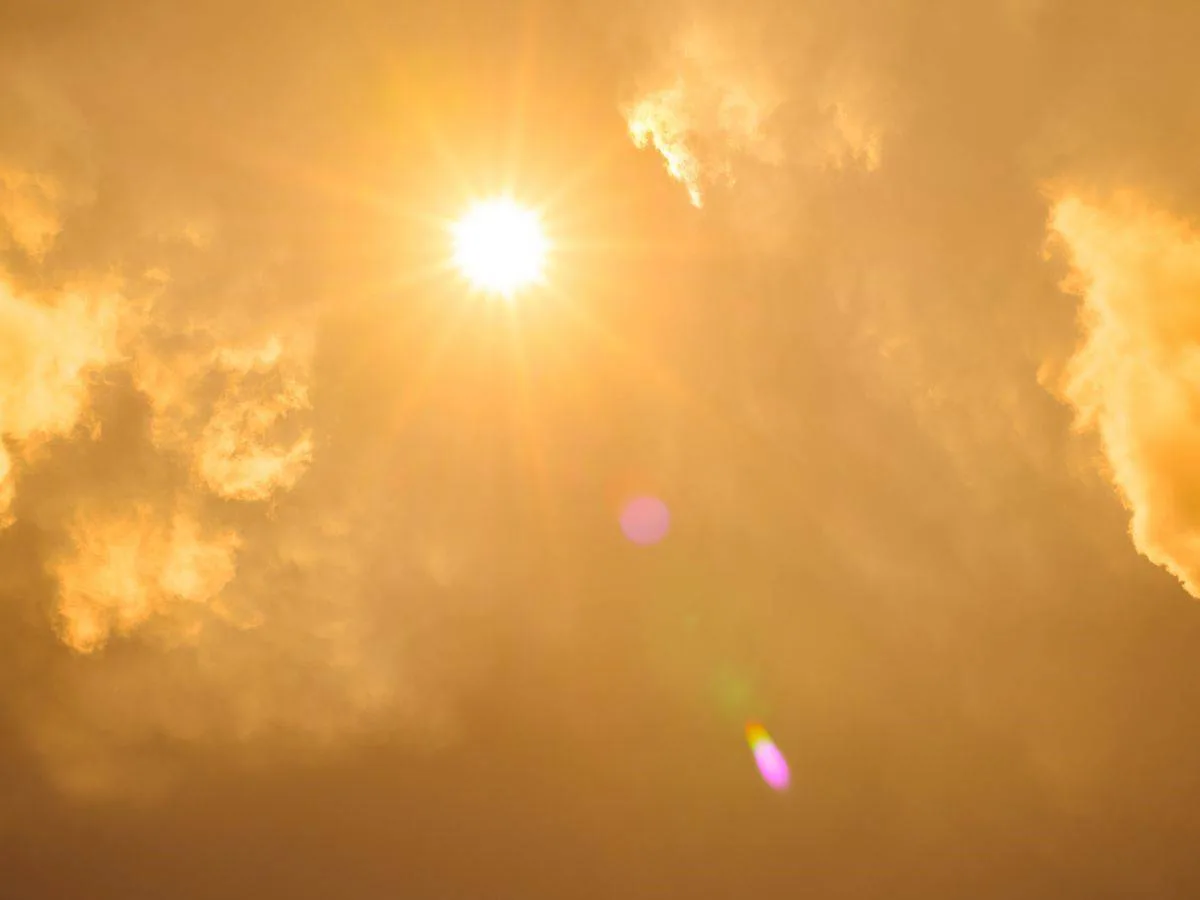Hyderabad: The weathermen in Telangana have forecast slightly hotter conditions in Hyderabad and surrounding areas in March with day temperatures above normal by two to three degrees Celsius.
The normal temperatures are between 34 to 37 degrees Celcius in March, marking a growth trajectory from winter to summer in the previous month. This may go up to 39 degrees Celcius to 42 degrees Celcius as the summer stabilises in March, according to YV Rama Rao, a retired deputy director general (Meteorology) of the Indian Meteorology Department (IMD).
Rao now a consultant at the Telangana Development Planning Society (TGDPS), involved in data compilation and quality control of observations from 1,048 weather stations of the Telangana government, Rama Rao has said that temperatures will rise following a normal pattern and fluctuations due to wind and dryness.
In the peak summer of April-May, the temperatures are generally between 42 degrees Celcius to 45 degrees Celcius unless there are severe heatwave conditions. “It is normal heat conditions in the city as of now,” said the director of IMD Hyderabad Kopparthi Nagaratna.
She denied giving any heatwave warnings as of now. Skymet Weather, a private company providing weather forecasts, put out on its website that the day temperature which was 35 degrees Celcius for the past few days will likely go up by one degrees Celcius on Wednesday, February 19.
Historical heatwave trends in Telangana
A severe heat wave condition was experienced in Jogulamba Gadwal and Mahbubnagar districts on May 4 last year. In the preceding year, severe heat waves were also recorded in Khammam, Bhadradri Kothagudem, Medak, Adilabad and Peddapalli for four days.
According to the IMD records, the summer of 2019 was the worst in the last five years as heat waves were experienced for seven days in June in Khammam and Medak districts. Peddapalli also had a severe heatwave on May 28, 2019. Heatwaves prevailed for 43 days from April to June across Telangana.
There were 9 heatwave days in 2020, 2 in 2021, 5 in 2022, 15 in 2023 and 23 in 2024.
The data of IMD for February 2024 showed the day temperatures ranging from 31 degrees Celcius to 35 degrees Celcius at several centres except Khammam where it was 36 degrees Celcius. A couple of centres also recorded 37 degrees Celcius.
The annual report of TGDPS said the state faced moderate to high temperatures during the summer months from March to June. Temperatures changed a lot during the day with a minimum during the early morning and a maximum during the afternoon hours. In the summer season of 2024, the highest maximum temperature of 47.2 degrees Celcius was recorded at Bheemaram mandal of Mancherial district on May 30.
The heatwave season starts in March and goes on till May and sometimes extends up to the first week of June, amid a delay in the onset of monsoon.
The variation of temperature during the day shows a gradual rise from 11:30 am to 3:30 pm. After 4:30 pm, temperature shows a sudden fall of 6-8 degrees Celcius in two hours from 4:30 pm to 6:30 pm because of the semi-arid nature of the soil.
In 1984, heatwaves prevailed for 16 days from May 14 to 29 in the coal belt area of Ramagundam. From 1994 onwards, the frequency of severe heat waves and the duration of heatwave spells have increased significantly.
In 1997, between May 18 to June 5, and 1998, between May 23 to June 10, the duration of moderate to severe heatwave spells had extended up to 19 days.
Heatwave risks, preparedness measures
To meet the threat of heatwave conditions in the state, the disaster management department headed by special chief secretary Arvind Kumar has planned a meeting of district collectors next week to discuss measures to take an early warning system to all villages. It will be presided over by the revenue minister Ponguleti Sudhakar Reddy. “To reduce the impact of heat stress, the early warning system will help a great deal on days when temperatures are likely to be high,” Arvind Kumar remarked.
Heatwaves have claimed hundreds of lives in Telangana over the years as the state was under the Core Heatwave Zone (CHZ). The highest impact of heatwave is caused in May. By definition, heatwaves are identified with maximum temperatures shooting above 40 degrees Celcius and depart from normal by 4.5 to 6.4 degrees Celcius. A severe heatwave is in excess of 45 degrees Celcius and departs from normal by 6.4 degrees Celcius or more.
Responding to a question on heatwave deaths, Arvind Kumar said, “Heatwave is not yet classified as a natural disaster by the state government. Deaths in peak summer always get coloured. It becomes difficult to pin down a particular cause.”
A few states like Tamil Nadu have classified it as a natural disaster and started collecting data on deaths. The government of Telangana is in the process of identifying it as a natural disaster. We can then be sure of the number of casualties and loss of productivity due to the heat wave.
Since heat wave conditions prevail in several parts of the state during the summer, deaths occur due to sunstroke every year. In 2015, the number of deaths due to sunstroke at 541 was the highest in the decade. Gradually, deaths have been decreasing amid an improvement in weather forecast and disaster preparedness.







